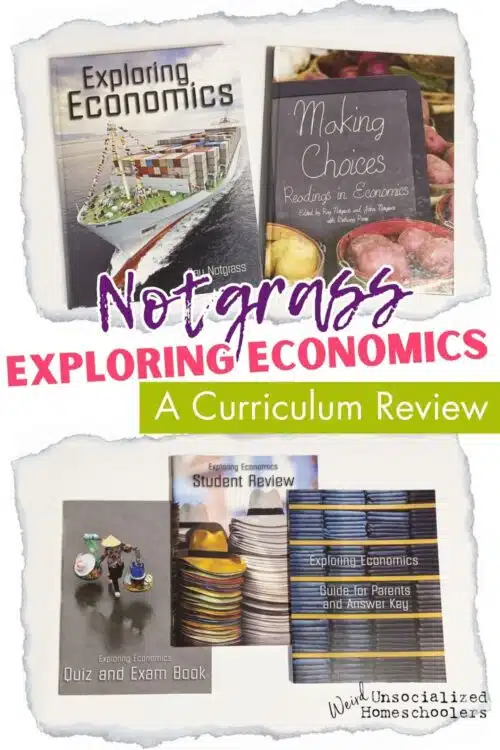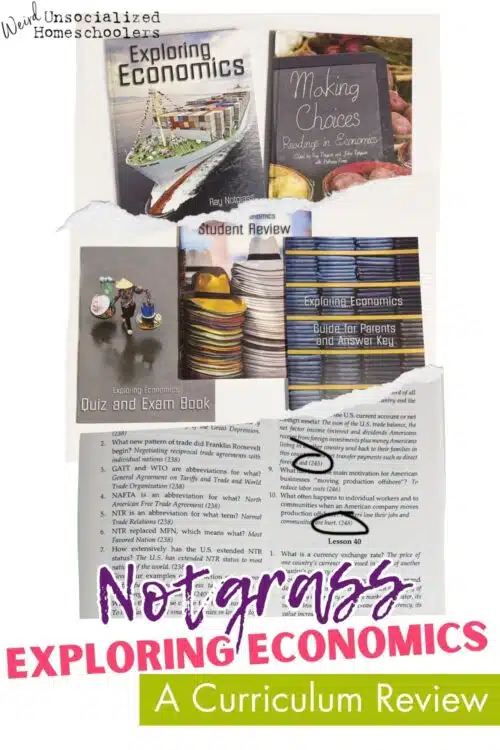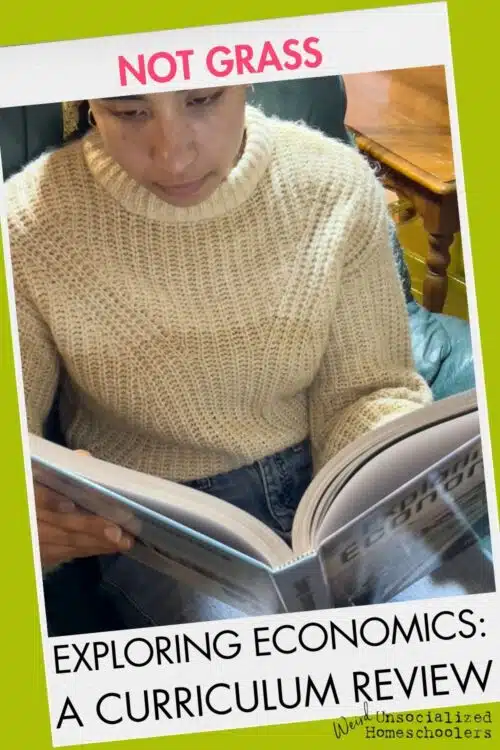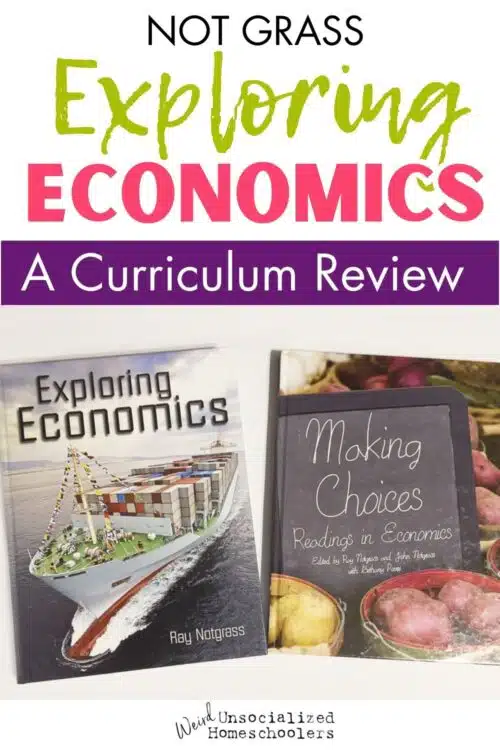Notgrass Exploring Economics: A Helpful Curriculum Review
By Jennifer Smeltser
Economics is a subject we all know is important to teach our children, but we do not generally get around to completing a study until high school. It is just one of those subjects you are supposed to teach, and it should be, especially since economics affects every financial decision we make–from purchasing a piece of gum to buying a yacht.
Notgrass Exploring Economics breaks down the concept of economics and explores the human behaviors behind how we use our money. This curriculum helps students gain a better understanding of the importance of economics in their lives.
Economics affects every financial decision we make, from purchasing a piece of gum to buying a yacht. Notgrass Exploring Economics breaks down the concept of economics and explores the human behaviors behind how we use our money.
About Notgrass Exploring Economics
Notgrass Exploring Economics is a high school economics and English curriculum. It is one of five in the high school social studies series Notgrass publishes. Although the course falls into the high school scope and sequence as the last course in the social studies series, students may complete the course at any time during their high school years.
Exploring Economics is a one-semester course where students will earn one-half credit in social studies at the completion of the course; they also have the option of earning one full English credit by doing that component of the study.

As with all Notgrass publications, it is written from a Christian perspective, but you do not have to be a Christian to appreciate the study. Students are taught about economics from its early days in church history to contemporary times. There are 15 chapters and each has five lessons with titles like
- The Radical Economics of Jesus
- Money and the New United States
- How Markets Work
- Wise Investing
- Social Security and Medicare
- Me and My Money
These lessons cover a variety of topics dealing with economics.
The Exploring Economics Curriculum Package comes with two books, Exploring Economics and Making Choices. You will need these two books to complete the study.
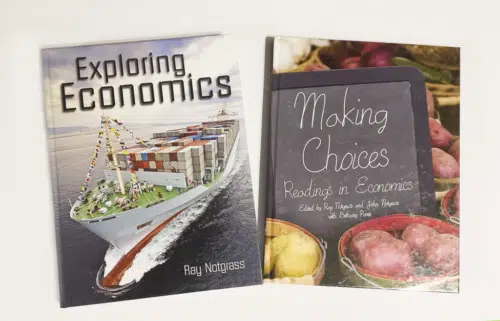
Looking In Exploring Economics (lesson and assignment book):
Some of the features of the book are engaging black and white, and color pictures depicting scenes from the lessons the student reads. The five daily lessons are well laid out and have a student review of questions.
Each unit includes an assignment list noting when the student is to read a selection from Making Choices and chapters from the literature books for the English credit (if doing so), and a list of projects from which to choose to complete for each unit.
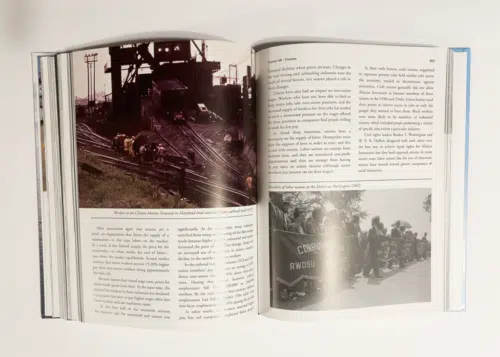
Making Choices is a collection of historical and modern documents, essays, and letters that date back to as early as 1630 with an excerpt from John Winthrop’s ” A Model of Christian Charity” (discussing the origin of the socioeconomic structure being from God) to the contemporary Eric Potter’s 2016 “Will We Heal with Living Water or Snake Oil?” that discusses a God-centered approach to medicine.
The Exploring Economics Student Review Pack comes with a Quiz and Exam Book, Student Review, and a Guide for Parents and Answer Key,
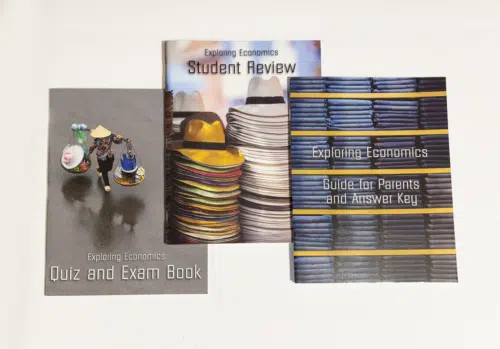
Although these are supplements, I highly recommend purchasing these resources.
The Quiz and Exam Book includes a quiz for each unit lesson, as well as three exams to be given after the student completes five unit lessons. The pages are perforated, so you can tear out the quizzes and exams to be used. Being able to remove the quizzes and exams from the book made it easier for my left-handed child.
The Student Review Book includes 10 questions for each lesson, providing a thorough review of what the students read, which helps them retain the information for comprehension. It also includes a primer for literary analysis as well as literary analysis exercises for the literature books.
The Guide for Parents and Answer Key includes the answers to all the review questions, quizzes, and tests. This book was a definite blessing and one I could not have taught the lesson without. There is just not enough time in the day to do my personal work as well as read through all of the school work my children have to do each day.
Along with providing the answers to the review questions, the parent can easily see where in the Notgrass Exploring Economics book (without having to read the entire test) the answers can be found by the page number that is in parentheses (shown circled in the picture below). That helped me put into context what the question was referencing and made it easier for me to jump into a quick discussion about what she read.
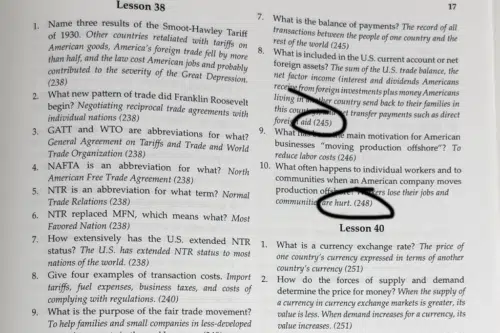
The Exploring Economics Literature Package requires the following books:
- Silas Marner by George Eliot, which is covered in Units 1-3
- The Rise of Silas Lapham by William Dean Howells, which is covered in Units 4-7
- The Travels of a T-Shirt in the Global Economy by Pietra Rivoli, which is covered in Units 8-11
- Mover of Men and Mountains by R. G. LeTourneau, which is covered in Units 12-15
You will need to purchase the literature books if completing the English portion of the study.
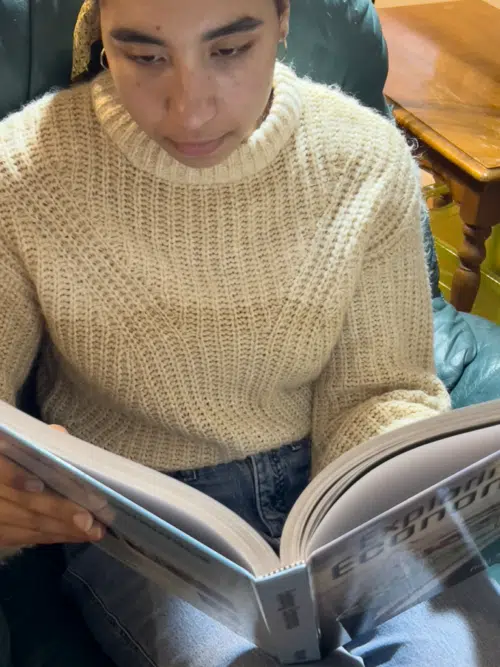
Working Through Notgrass Exploring Economics
One of the reasons I love using Notgrass for high school is the material speaks to the student and enables them to work not only at their own pace, but independently. The only time I really stepped in during the daily lessons was to read the Student Review questions, which we did orally, but I could have easily had her do written responses on her own.
The pace I set was to complete one lesson a day to meet the weekly assignments. One of the resources in the bonus downloads is a lesson assignment that details the weekly and daily work, so the student (and parent) can keep track of the course progress.
Each unit has three suggested projects from which the student can choose to complete to enhance the lessons. The projects will appeal to all types of students:
- Composition prompts for your writer
- Hands-on projects that include painting, drawing, computer design, and other creative activities for your artist
- Playwriting, videography, and performance for your theatre lover and aspiring actor
- Research and critical thinking for your problem solver.
With this course, I wanted to spend more time on writing, so the projects we completed were using the writing prompts. The project options enable the student to see how economics weaves through their everyday lives, making what could be a really dull study instead quite interesting.
One of the reasons I love using Notgrass for high school is the material speaks to the student and enables them to work not only at their own pace, but independently.
Notgrass helps parents maximize learning by combining multiple subjects into one curriculum. The curriculum is direct in its content while the pictures throughout the book give students a glance into the past as well as help with gaining a grasp on the subject.
Ray Notgrass manages to bring easy clarity to what is economics through the Exploring Economics curriculum.
Is Notgrass History right for your family? Answer five quick questions to find out! You can then enter your email to download the first three units from any Notgrass History curriculum. Take the Notgrass curriculum survey today.
More Posts You Might Enjoy
- The Ultimate Guide to Homeschooling High School
- How to Be Your Teen’s High School Guidance Counselor
- Homeschooling High School with Your Child in Mind
- How to Graduate a Homeschooler
This article was written by a Weird, Unsocialized Homeschoolers guest author. See the author's full bio in the body of the post.




